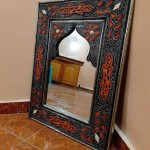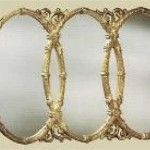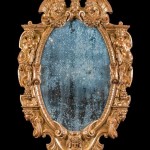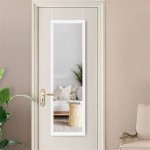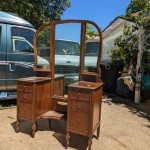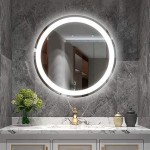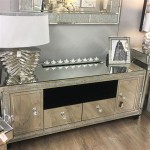Can a Mirror Be Replaced in a Frame?
Replacing a mirror within an existing frame is often a viable option, offering a cost-effective way to refresh a room's aesthetic or repair damaged glass without discarding the entire piece. Several factors influence the feasibility and complexity of this process.
Assessing the Frame's Construction
The frame's construction plays a crucial role in determining whether mirror replacement is possible. Frames secured with nails or staples generally allow for easier access to the existing mirror. These fasteners can be carefully removed, the old mirror extracted, and a new one installed. Frames with intricate joinery or glued components present a more significant challenge, increasing the risk of damage during disassembly.
Measuring for a Replacement Mirror
Precise measurements are paramount when ordering a replacement mirror. Accurate dimensions prevent issues with fit and ensure a seamless installation. Measurements should be taken within the frame's rabbet, the recessed area designed to hold the mirror. It’s advisable to deduct a small amount (typically 1/8 inch) from each dimension to allow for expansion and contraction of the mirror due to temperature fluctuations.
Selecting the Right Mirror Type
Various mirror types exist, each with its own characteristics and suitability for framing. Standard glass mirrors offer a clear reflection and are readily available. Low-iron mirrors provide enhanced clarity and minimize the green tint sometimes observed in standard mirrors, making them ideal for larger framed pieces. Safety-backed mirrors, coated with a protective film, are recommended for areas prone to impacts, such as bathrooms and children's rooms.
Removing the Old Mirror
Removing the existing mirror requires careful handling to avoid injury. Protective gloves and eye protection are essential. If the frame is held together with nails or staples, these can be carefully removed using a pry bar or staple remover. For glued frames, gentle persuasion with a putty knife or thin blade may be necessary to separate the frame components. If the mirror is broken, extra caution is needed to avoid further shattering. Covering the damaged mirror with packing tape can help contain the shards.
Installing the New Mirror
Once the old mirror is removed, the frame's rabbet should be cleaned of any debris or old adhesive. The new mirror can then be carefully placed into the rabbet. For frames originally assembled with nails or staples, these can be re-inserted to secure the mirror. For glued frames, mirror adhesive or glazing points can be used to hold the new mirror in place. Glazing points, small metal clips, are inserted into the rabbet at regular intervals to secure the mirror's edges.
Considerations for Antique or Intricate Frames
Antique or intricately designed frames may require specialized handling. Consulting a professional framer is recommended to avoid potential damage. These frames often feature delicate joinery or decorative elements that can be easily compromised during mirror replacement. A professional framer possesses the expertise and tools to navigate these complexities and preserve the frame's integrity.
Seeking Professional Assistance
While replacing a mirror in a simple frame is often a manageable DIY project, complex frames or large mirrors may necessitate professional assistance. Framing shops and glass companies possess the experience and specialized equipment to handle a wide range of mirror replacement scenarios. They can advise on the appropriate mirror type, ensure accurate measurements, and perform a safe and efficient installation, minimizing the risk of damage to both the mirror and the frame.
Choosing the Right Adhesive
When using adhesive for mirror installation, selecting the appropriate type is crucial. Mirror mastic, specifically designed for this purpose, provides a strong and durable bond. It's essential to follow the manufacturer's instructions regarding application and curing time. Using incorrect adhesive can lead to inadequate adhesion or even damage the mirror backing.
Protecting the Mirror During Installation
Throughout the installation process, protecting the mirror's reflective surface is paramount. Handling the mirror by its edges and avoiding contact with the reflective surface prevents fingerprints and smudges. Laying down a soft cloth or protective sheet on the work surface provides an additional layer of protection against scratches.
How To Upgrade Your Builder Grade Mirror Frame It

How To Frame A Bathroom Mirror Heather O Steen Photography

Diy How To Frame A Builder Grade Bathroom Mirror Home And Hallow

Mirror Replacement Window Repair Nyc

Upgrade Your Bathroom Vanity Mirror

How To Fix A Ed Mirror The Diy Repair Guide

Medicine Cabinet Frame Update Atop Serenity Hill

18th Century Mirror Glass Replaced Chairish

Old Frame Vintage Replaced With Bevelled Mirror Port Elizabeth Gumtree South
Round Mirror Custom Cut 3 25 5 75 875 Replacement Discs Disks Photo Frame Makerplace By Michaels

